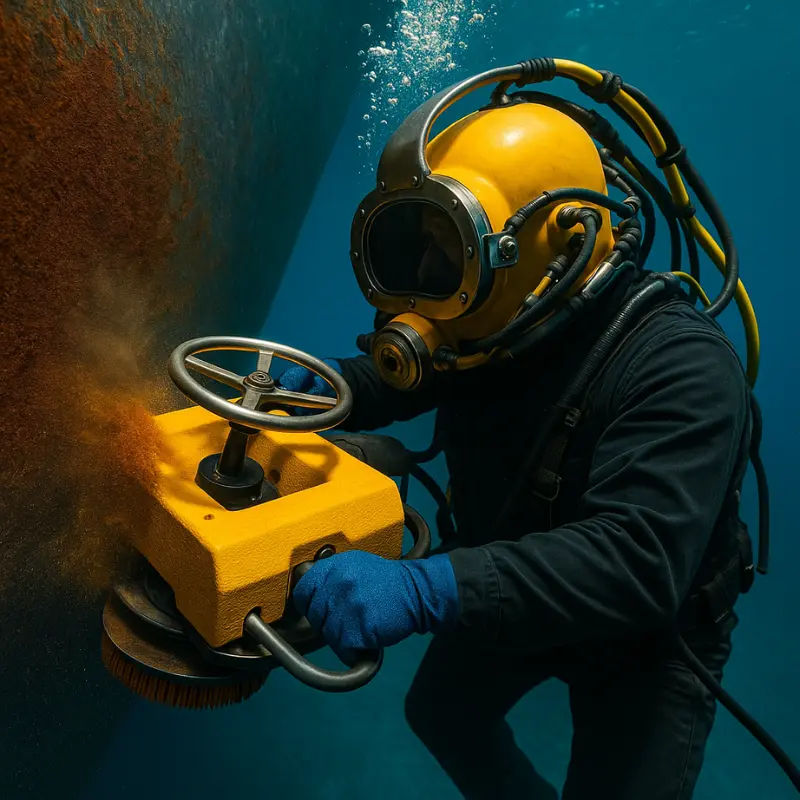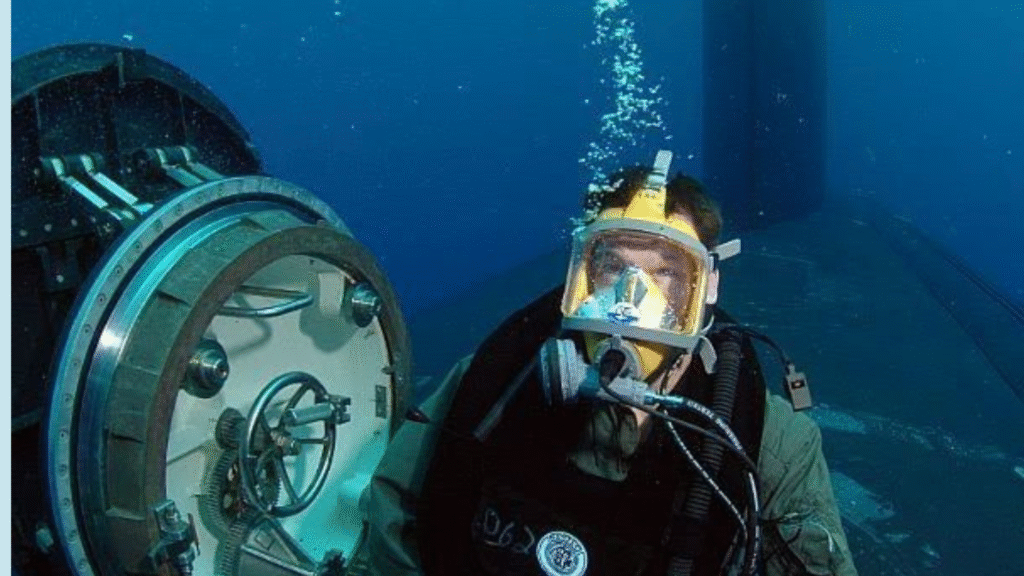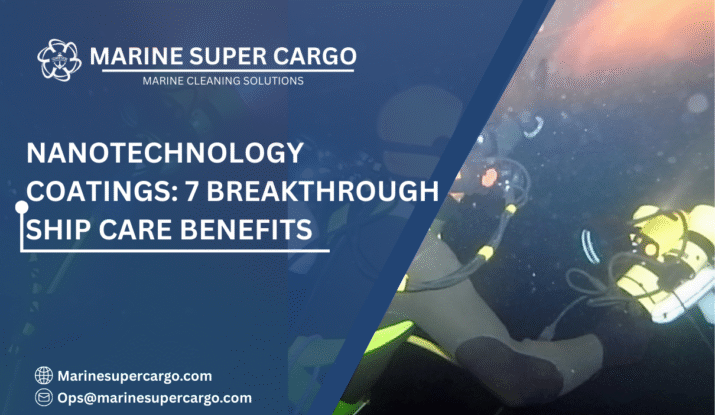Imagine if your ship’s hull could act like a lotus leaf, where water droplets simply slide away, carrying dirt and debris along with them. That’s the promise of Nanotechnology Coatings—next-generation surface treatments engineered at the microscopic level to repel biofouling, reduce drag, and extend coating life far beyond traditional methods.
In the centuries-old struggle between ship operators and marine organisms, advancements in paint and coatings have defined industry standards. First came toxic copper paints, then silicone-based fouling release coatings. Now, the era of Nanotechnology Coatings is upon us, offering futuristic antifouling capabilities while aligning with the world’s growing environmental and compliance pressures.
In this article, we’ll unpack how Nanotechnology Coatings are changing ship maintenance, why they matter for fuel efficiency, compliance, and sustainability, and what the future holds for this microscopic yet mighty innovation.
Why Biofouling is the Enemy of Efficiency
Marine biofouling—the unwanted accumulation of algae, barnacles, mussels, and even micro-slimes—is the shipping equivalent of cholesterol in human arteries. It silently narrows efficiency channels, raising costs and threatening compliance.
- Fuel Penalties: According to the International Maritime Organization (IMO), hull fouling can increase fuel use by up to 40%.
- Emission Concerns: More fuel equals more greenhouse gases, pushing vessels out of compliance with MARPOL Annex VI emission frameworks.
- Invasive Species Spread: Fouling acts as a vector for species transfer, an issue underlined by IAPH and IMO biofouling management plans.
- Coating Degradation: Fouling often damages traditional paints, leading to costly recoats in dry dock.
Simply put: a fouled hull equates to wasted money and regulatory headaches.
Traditional Coatings: The Old Solutions
- Copper-based antifouling paints: Toxic to organisms but equally harmful to ecosystems, these are increasingly restricted.
- Silicone-based fouling release coatings: Eco-friendlier, they rely on reducing adhesion rather than poisoning organisms. They work but are costly and can still degrade over time.
- Regular cleaning: Manual or robotic removal tackles fouling but doesn’t prevent it.
While these solutions extend usability, none fully address the trifecta of efficiency, durability, and compliance. That’s why nanotechnology has entered the arena.

What Are Nanotechnology Coatings?
Nanotechnology Coatings are ultra-thin surface treatments engineered at the nanometer scale (a nanometer is one billionth of a meter). By manipulating chemical structures at the microscopic level, these coatings create unique properties, such as hydrophobicity (water-repelling), oleophobicity (oil-repelling), and self-cleaning abilities.
Think about how a lotus leaf stays free of dirt—its nano-structured surface forces water droplets to roll off, picking up dust along the way. Nanotechnology Coatings bring this natural phenomenon to ship hulls.
How Nanotechnology Coatings Work
- Nano-structured Surfaces: They modify hull texture at the microscopic scale, making it extremely difficult for organisms to anchor.
- Hydrophobic Layers: By repelling water, the coating reduces the attachment strength of slime and fouling.
- Self-cleaning Effect: Water flow during voyages naturally removes debris and early-stage biofilms.
- Durability Enhancements: Altered chemical composition provides better corrosion resistance, reducing maintenance cycles.
The result? A hull that stays smoother, longer, without constant intervention.
At Marine Super Cargo, we provide trusted marine cleaning solutions across 1,100+ ports worldwide. From hold cleaning to underwater hull cleaning and tank cleaning, our services are designed to keep your fleet fully compliant, efficient, and cargo-ready. pic.twitter.com/N5VYZZjlQH
— Marine Super Cargo (@Marinsupercargo) September 11, 2025
Benefits of Nanotechnology Coatings
1. Superior Fuel Efficiency
Reducing friction drag means ships move faster with less fuel. Studies suggest Nanotechnology Coatings can improve fuel efficiency by 10–15%, translating to millions in annual savings for large fleets.
2. Environmental Compliance
Unlike copper-based paints, nano-coatings avoid toxic leaching into marine environments. This aligns with IMO and MARPOL eco-friendly directives.
3. Biofouling Resistance
By disrupting settlement at its earliest stages, Nanotechnology Coatings prevent large fouling colonies, reducing the need for risky in-water cleaning.
4. Longer Coating Life
Nano-structured layers resist wear, preserving coatings under harsh sea conditions and extending dry-docking intervals.
5. Reduced Maintenance Costs
Operators save not only on fuel but also on expensive re-coating jobs, diver interventions, or robotic hull cleanings.
6. Enhanced Safety
Effective coatings reduce the frequency of manual cleaning by divers, improving safety compliance with IMCA guidelines.
7. ESG Reputation Gains
In an era where environmental, social, and governance (ESG) performance is scrutinized, adopting eco-safe coatings boosts a company’s credibility.
Real-World Applications
- Commercial Shipping: Tankers, bulkers, and container carriers benefit by reducing fuel spend across long voyages.
- Naval Forces: Military fleets require peak efficiency and stealth—nano-coatings provide smoothness without toxicity.
- Offshore Platforms: Subsea structural elements like risers and legs remain clean longer.
- Yachting and Cruise: Operators value not just efficiency but aesthetics—nano-coatings deliver both.
Also read about Underwater hull cleaning in Ecuador.
Challenges with Nanotechnology Coatings
Like any innovation, Nanotechnology Coatings face hurdles:
- High Initial Cost: Application is more expensive up front compared to traditional paints.
- Limited Port Availability: Few dry docks currently offer nano-coating application facilities.
- Testing Phase: Long-term durability data is promising but still growing.
- Application Complexity: Requires specialized equipment and trained personnel.
Still, as adoption spreads, these barriers are expected to shrink, just as silicone-based coatings once did.
Regulatory Alignment
Nanotechnology’s eco-friendly approach fits within global compliance frameworks:
- IMO Guidelines on Biofouling (2011 & updates) – Encourages non-toxic, sustainable systems.
- MARPOL Annex VI – Reduced emissions through drag control.
- IAPH Directives – Invasive species reduction through non-invasive coatings.
- IMCA Standards – Safer practices by reducing diver dependence.
These make Nanotechnology Coatings a tool not just for performance but for regulatory peace of mind.

The Future of Nanotechnology in Antifouling
Looking ahead, innovation will go deeper:
- Smart Coatings: Surfaces that change properties dynamically—releasing antifouling agents only when fouling risk rises.
- Self-healing Nano-surfaces: Coatings that repair micro-damage automatically, extending lifespan further.
- Hybrid Systems: Combining Nanotechnology Coatings with robotic cleaning platforms for 360° antifouling strategies.
- Digital Integration: Nanocoatings paired with sensors tracking hull smoothness, exporting real-time data to fleet managers.
The next decade may see hulls that practically clean themselves—a major leap in shipping’s sustainability.
Conclusion
Nanotechnology Coatings are redefining hull protection. They combine hydrophobic, self-cleaning properties with eco-friendly formulas, slashing fuel costs, cutting emissions, and supporting compliance. For ship operators, the benefits are both economic and environmental.
3 Key Takeaways:
- Nanotechnology reduces biofouling attachment, boosting efficiency and savings.
- The coatings align with IMO, MARPOL, and IAPH eco-standards.
- Future developments promise self-healing, smart antifouling systems.
For forward-thinking ship operators seeking sustainable antifouling solutions, explore deeper insights at CleanShip.co.
FAQ:
Q1. What are Nanotechnology Coatings in shipping?
They are nano-engineered hull treatments designed to make surfaces hydrophobic, self-cleaning, and resistant to marine biofouling.
Q2. How do Nanotechnology Coatings save fuel?
By keeping the hull smooth, they reduce drag, cutting fuel use by up to 15% and lowering operating costs significantly.
Q3. Are Nanotechnology Coatings environmentally safe?
Yes. Unlike copper paints, they don’t leach toxins into the water, making them MARPOL- and IMO-compliant.
Q4. Can all vessels use Nanotechnology Coatings?
Yes, from cargo carriers and offshore rigs to naval vessels and yachts, although application costs vary.
Q5. What is the future of Nanotechnology Coatings?
Expect smart, self-healing, and sensor-integrated coatings that offer predictive antifouling and extended durability.


